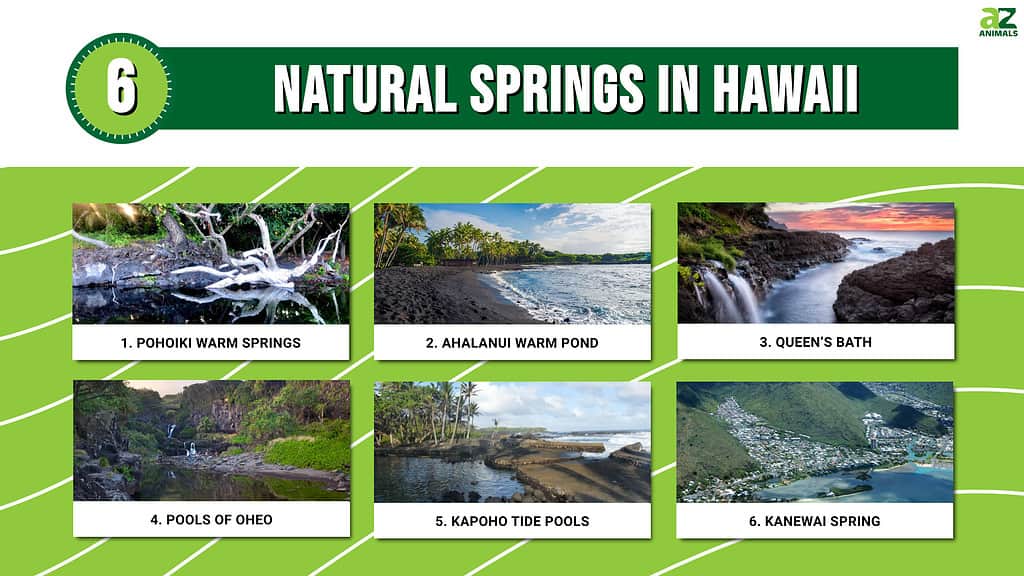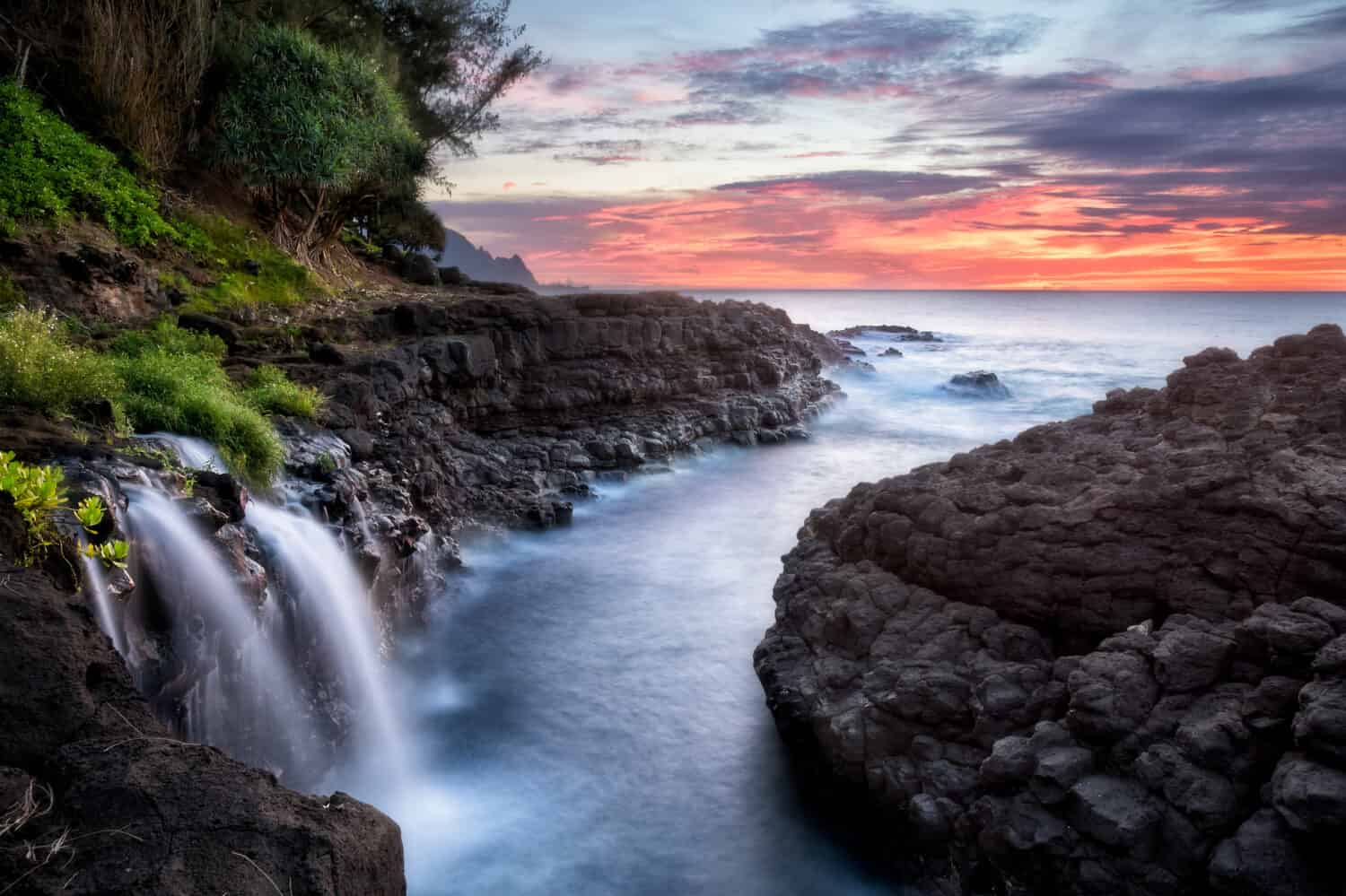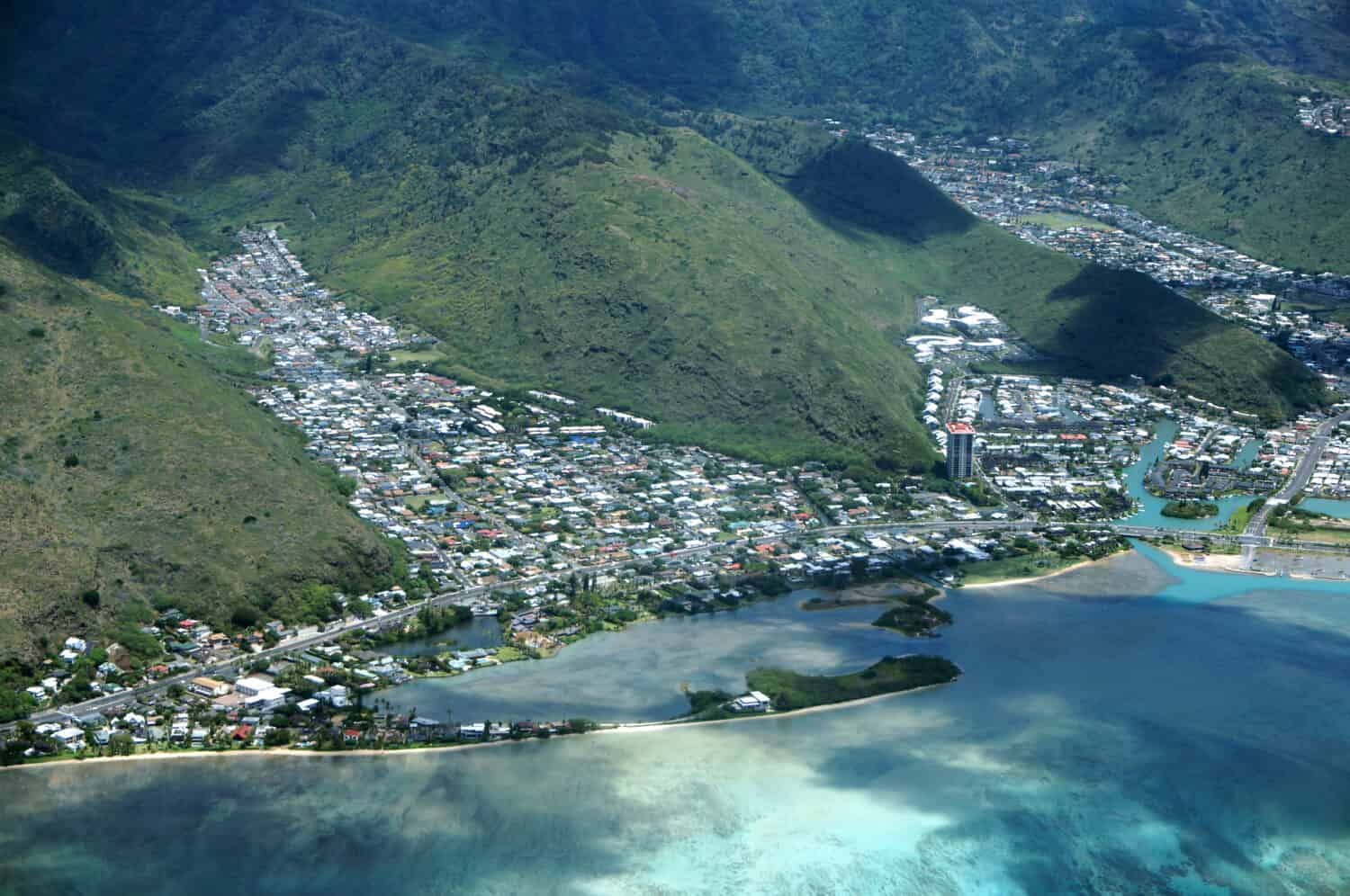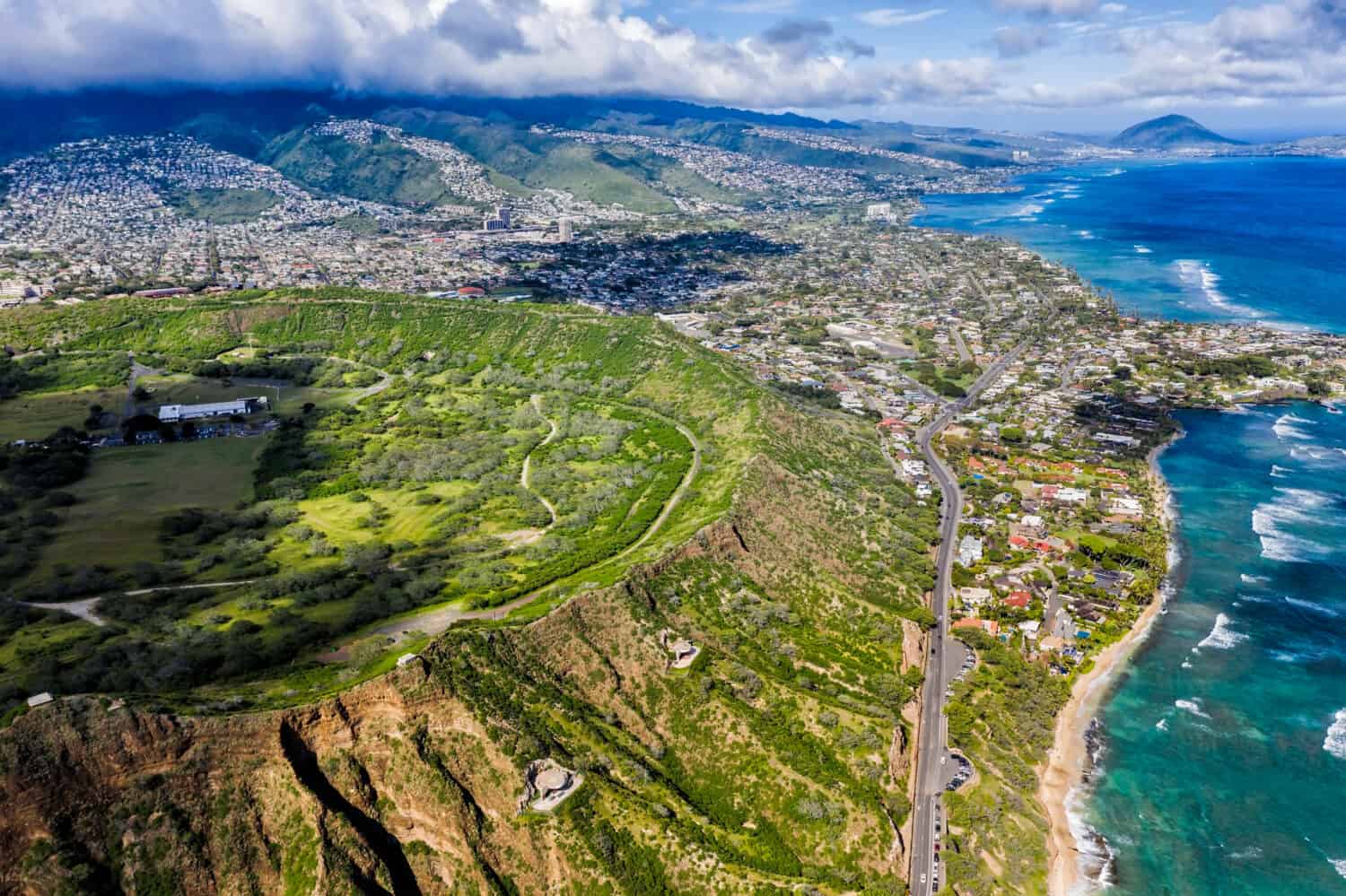Aloha! Hawaii is the 50th state in the United States and it is a chain of eight major islands. You can pick which one to go to and you will find beauty in each of them. People flock all over the world to visit Hawaii because it has beautiful views. It is nature galore — from mountains to volcanoes, natural springs, and tropical rainforests.

Visiting Hawaii is not for someone who wants to spend a three-day weekend there. After all, there is much to do and several islands to visit. Besides visiting the city and exploring the rich, cultural history of Hawaii, there are also the beaches. Hawaii has lots of gorgeous beaches with turquoise, clear water.
It’s a very Instagram-able state and you will be able to enjoy every minute of it with fun-filled activities. For those natural lovers out there who want to enjoy their time submerging themselves in natural springs, there’s a list just for you. Natural springs have become quite popular and a booming business opportunity for locals. Here are six natural springs in Hawaii and where you can find them.
6 Natural Springs in Hawaii and Where to Find Them
1. Pohoiki Warm Springs

Isaac Hale Beach Park is named after a private who was killed in action in the Korean War.
©Rebecca Raven Wood/Shutterstock.com
First on the list is Pohoiki warm springs. Located on the Big Island, Pohoiki warm springs are located in Isaac Hale Beach Park. Because of the 2018 volcanic eruption, the black sand beach was formed, and in came other natural ecosystems. The way Pohoiki warm springs were formed was that a volcanic tube of lava collapsed, turning it into a spring. When it rains, the water fills up into the earth. The magma heats up the spring, which mixes with the ocean tide. Thus, it becomes the perfect temperature for you to enjoy some relaxation time in the springs. The temperature of the water will range between 75 and 85 degrees.
Besides going to the Pohoiki warm springs, you can also enjoy four other thermal ponds in Isaac Hale Beach Park. The jungle creates the perfect shade for you, so you don’t have to worry about the sun. After a nature walk along the breathtaking ocean views, you can pick which thermal pond to relax in after a long hike.
2. Ahalanui Warm Pond

“Millionaire’s pond” is one of the nicknames for Ahalanui warm pond.
©Alexander Demyanenko/Shutterstock.com
As mentioned above, the 2018 Kilauea volcanic eruption made way for new habitats to form. Unfortunately, it also destroyed many things in its path until the lava reached the ocean. One of the casualties of the volcanic eruption was the Ahalanui warm pond. Tourists visited this pond because it had a thermal-heated swimming pool. The ocean was directly in front of it, providing a gorgeous view for anyone in the warm pond. The Ahalanui warm pond was half-fresh water and half-sea water. The bottom was a mix of sand and mud.
After the destruction of the Ahalanui warm pond, people’s attention diverted to the Pohoiki warm springs, which are only half a mile away.
3. Queen’s Bath

Princeville is located on the north side of Kauai with a population of 2,158.
©Adam Springer/Shutterstock.com
Located on the island of Kauai in the town of Princeville, the Queen’s Bath was formed by lava rock that was next to various lagoons. The magma from the volcanoes heated the lagoons, thus creating a symbiotic relationship. Interestingly enough, there was an original Queen’s Bath located on the Big Island. But as is common with active volcanoes in the area, these natural springs were destroyed by volcanic eruptions in the late 1980s.
There is a tiny waterfall in the Queen’s Bath and the thermal pool has a view of the ocean. To access the springs, you can walk up a trail. During the hike, make sure you look out for wildlife. And beware, the trail can be dangerous for beginner hikers. Several people fell and drowned because of the dangerous hike.
4. Pools of Oheo

The Pools of Oheo has over 20 swimmable pools.
©IndustryAndTravel/Shutterstock.com
If you have to pick one natural spring to go, then this is it. Your eyeballs will be in awe and your jaw will drop every time you turn around. The pools of Oheo are several natural springs connected by waterfalls. Located on the south side of the island of Maui, the pools of Oheo are also called the Seven Sacred Pools of Oheo.
River water fills the pools of Oheo, formed because of igneous rock formations. The sun’s rays heat the pools, therefore they are technically not thermal waters. But in terms of ensuring you have some relaxation and de-stressing time, this will be perfect for you. The pools are part of the Haleakala National Park, so there’s a fee to enter. And if you want to avoid tourist crowds, it’s best if you wake up early and make it there before noon.
5. Kapoho Tide Pools

The Big Island is the largest island in Hawaii.
©Mam Maggy/Shutterstock.com
Next up on the list are the Kapoho tide pools. They are also located on the Big Island of Hawaii, approximately one and a half miles north of the Ahalanui warm pond. These beautiful tide pools were unfortunately another casualty of the 2018 volcanic eruption in Hawaii.
These tide pools were right on the ocean, which provided tourists with amazing views of the rainforest and ocean. Sea turtles and all kinds of marine life inhabited the pools. The diverse ecosystem in these tide pools was immense. The temperatures were perfect, ranging from 75 degrees Fahrenheit to 85 degrees Fahrenheit. The volcanic lava’s path destroyed all of the tide pools.
6. Kanewai Spring

Kanewai Spring was most likely the site of the first European visit to the island of Oahu in 1786. Captain Portlock led the expedition.
©Eric Broder Van Dyke/Shutterstock.com
Kanewai Spring is located on the south end of the island of Oahu. It is one of the only freshwater springs in the entire island chain. Mass development on the island and natural disasters have plagued Oahu. Therefore, Hawaii doesn’t have many freshwater springs left. Kanewai Spring is a hidden gem inside a paradise oasis. The water comes from mountain rivers, which have provided a source of drinking water to people for generations. In Hawaiian, Kanewai Spring means, “where the mountain gives birth to the ocean.”
Maunalua Fishpond Heritage Center and the local government invested money to ensure this spring was protected. Renovations to create a beautiful habitat available for tourist visits started years ago.
Conclusion
And there you have it, the list of six natural springs located in Hawaii. As such, volcanic activity in the Hawaiian islands threatens various ecosystems. The lava’s path to the ocean destroyed many things. The upside is that newly formed habitats emerge and that creates an absolutely beautiful symbiosis.
The tropical jungles, the natural springs, the winding paths, and the ocean views make each day in Hawaii a tremendous gift. Once you have done the touristy activities like going to Pearl Harbor, walking along city boulevards, and lying on Waikiki Beach, you should take a day or two to explore the uninhabited parts of Hawaii. There is no doubt that you will enjoy spending time in the Hawaiian islands, basking in the beauty of nature.
Summary of 6 Natural Springs in Hawaii and Where to Find Them
| Number | Natural Spring | Location |
|---|---|---|
| 1 | Pohoiki Warm Springs | Hawaii |
| 2 | Ahalanui Warm Pond | Hawaii |
| 3 | Queen’s Bath | Kauai |
| 4 | Pools of Oheo | Maui |
| 5 | Kapoho Tide Pools | Hawaii |
| 6 | Kanewai Spring | Oahu |
Thank you for reading! Have some feedback for us? Contact the AZ Animals editorial team.








